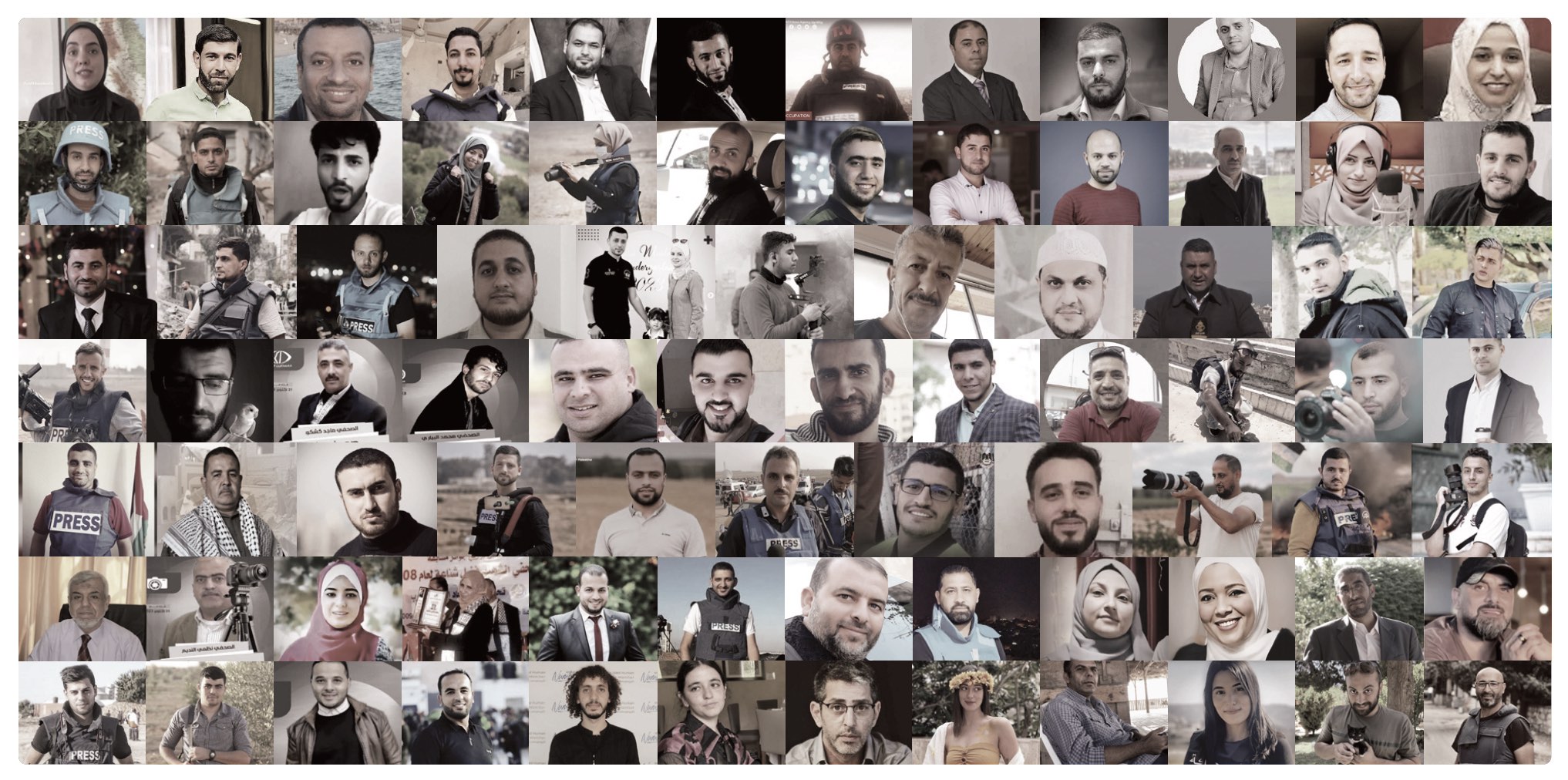INSI's annual report of media casualties, Killing the Messenger 2023, is out now.
As the toxicity of the public discourse about the Israeli and Palestinian issue clouds pretty much everything, we risk losing perspective as to why we keep and publish this tally of dead journalists in the first place.
Every year, early in January, we set about evaluating case by case who gets onto this list of journalists killed the previous year, and who doesn’t. It’s a bleak task but, usually, not a controversial one. It’s not like we are awarding a prize or bestowing a privilege. Far from it. No journalists would ever wish to be on our list.
This time, however, adding names to the record appears particularly loaded, not just with grief and worry, but also with the extra elusive pressure of ‘appearing’ impartial, in addition to obviously being it.
Of course, we are talking about the Middle East and the shocking number of journalists who’ve been killed there within the space of only 12 weeks, mostly but not only in Gaza.
We decided it was important to publish all the pictures we could find on the cover of our report. They happened to be mostly smiling faces. They include the four Israeli journalists who were killed in the Hamas attack of October 7, all the Palestinian journalists killed in Gaza and our colleagues killed in Lebanon.
This decision is a break with our conventional format, and there is a good reason for it.
All of us in the media safety sphere, keeping a tally of journalists’ deaths every year, broadly follow the same criteria. We agree that only those who perished in the line of work, or because of their job, should be included. Despite minor variations (some may include car accidents while on assignment, others may not), we always reach similar final tallies.
Not this time though, as the published estimates of journalists killed worldwide in 2023 wildly range between 43 and 150, mostly depending on how many Gazan fatalities are included in the count. Each end of this range represents either the lowest or the highest death toll among journalists in more than a decade.
Which is it then?
By following the usual set of criteria, all we can superficially establish, at this stage, is that a little over a dozen journalists were killed across the Middle East last year because of their job. In the specific case of Gaza, these would only be those who were killed while they were out in the street, on the job, holding a camera, pointing a microphone, asking a question. But not, for instance, those killed in their homes.
There is a rationale for sticking with these criteria. A logical argument, at least on the surface. How else can we reliably compare and contrast changes, or analyse trends if we use different criteria for different years?
However, by adding that number to the rest of the world’s deaths, which was lower in 2023, we have what may look like the best news in journalism safety in over two decades.
But is it, really?
We chose to publish the pictures of the journalists killed in 2023 in the Middle East on our front page to remind us all that these aren’t numbers, but people, and it’s the story of their lives and deaths that we need to reflect on, when preparing for what the years ahead may bring.
Numbers do matter but context matters even more. For instance, 2023 saw a drastic decrease in the number of journalists killed in Latin America, including ‘only’ 5 in Mexico compared to 16 the previous year. The number may appear to suggest that the situation has improved, particularly for those who cover traditionally dangerous beats such as corruption or organised crime. But has it? With impunity statistics still at abysmal levels in the region, I can’t shake the suspicion that the carnage of 2022 may have simply deterred many colleagues from embarking on such essential journalistic work in 2023, knowing that it may well translate into a death sentence. That would not be exactly a victory for journalism either.
Equally, casualties in Ukraine were lower in 2023 but surely not because the war became safer to cover. Numbers are likely down because fewer journalists went there.
So let us remind ourselves why we collect and publish details of journalists’ deaths every year.
We do it to remember and honour the sacrifice of colleagues who have lost their lives for journalism. We also do it, crucially, to keep a very close eye on the evolving threats and risks to journalists - so that we can prevent them, mitigate them, or advocate against them.
We don’t include in our list those who die of causes unrelated to journalism– such as old age, illness or everyday accidents. Sad but ordinary facts of life do not constitute a useful barometer of the vulnerabilities of our profession. If and when they did, we should include them too.
But there is nothing ordinary about the carnage of journalists in the Middle East, and particularly in Gaza, in 2023. None of the colleagues whose addition to the list may be disputed had a fatal heart attack on the job, or was run over by a bus on their way to the supermarket.
All those whose deaths we are ‘evaluating’ were working while desperately trying to survive, saw their loved ones die and were then killed themselves, all the while being right at the centre of the most consequential story of their times, and possibly of ours too.
It will be for others to establish who was intentionally targeted or otherwise. And accountability must be achieved at all costs.
But could anyone really suggest that journalists in Gaza, in the final three months of 2023, were working 9 to 5? And that they shouldn’t be counted in our tally because when they died at night under a bomb they were not ‘on the job’? Would foreign journalists killed in an attack on their hotel not have been counted?
These are extraordinary circumstances. Even if they wanted, none of the journalists we and others have chosen to include really had a chance to stop being a journalist, to stop bearing witness. Did an Israeli journalist linger a minute too long to take a picture, as journalists often do, rather than running from the killers on the prowl in his kibbutz? Was a young Gazan reporter reaching for her work notebook or mobile, to record her precious observations at the end of an exhausting day spent scrambling for food and water, when a missile hit her bedroom killing her and 20 members of her family? Would that count as being killed while on the job? Or is our profession reduced to the mechanical gesture of hitting record on a camera or holding a pen in your hand when death strikes from the sky?
The surreal nature of such considerations persuaded us of the need to have a different approach this time. One where we accepted that we may never know exactly what our colleagues were doing, thinking or planning at the moment of their death.
But there is no denying that every corner of that region of the world, and specifically, Gaza, is a news story worth telling at present. Since, shockingly, outside news teams are still prevented from properly covering it, every single journalist there inevitably represents a crucial piece of that story. The piece they had already told, the one they were working on, and the one they’ll never be able to tell.
Whether we include those colleagues’ names in the cold statistics or not, their deaths should not be dismissed as ‘inevitable’, nor met with widespread indifference, particularly by democratic governments at large. That this is happening should send shivers down our spines and prompt us to prepare for even worse to come.
- Elena Cosentino, INSI Director
Read Killing the Messenger 2023 now.



























































